Popular in the garden and as indoor houseplants, yuccas are long-lived perennials that produce offsets, or baby plantlets, that are ideal for propagating.
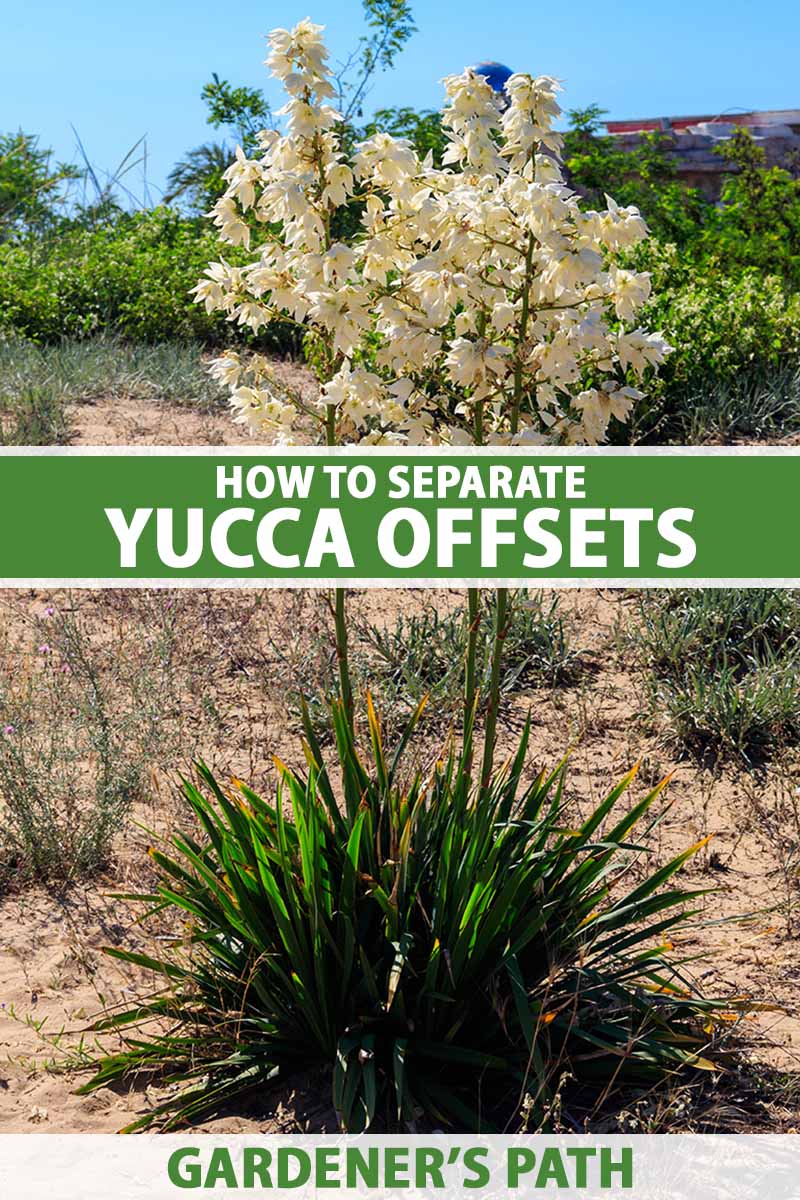
We link to vendors to help you find relevant products. If you buy from one of our links, we may earn a commission.
Hardy, drought tolerant, and adaptable to a variety of conditions, these handsome flowering succulents are low maintenance and require little water – an ideal choice for the beginner gardener and in water-wise or xeriscape settings.
Tall, head-turning spires of cream to white, bell-shaped flowers develop seeds that can be used for propagation, but seedlings can take up to five years to produce flowers… something you may not want to wait that long for!
Instead, propagation is most often done through stem cuttings or the division of offsets, also known as pups, which can flower as soon as the next growing season.
The pups don’t have to be removed. Left in place, they grow into handsome clumps with multiple flower stems.
But to double your pleasure, or to thin out plants, you can remove and replant some of the pups to quickly build your stock.
You can read more about the ins and outs of yucca cultivation in our guide.
Does your garden or home need a few more flowering succulents? Then let’s cut to the chase on how to separate and repot yucca offshoots!
Here’s what you’ll find ahead:
What You’ll Learn
When to Separate Offshoots
Most species of yucca are cold hardy in USDA Zones 5 to 11.
For outdoor specimens, that makes spring the best time to separate offshoots for gardeners in temperate areas.
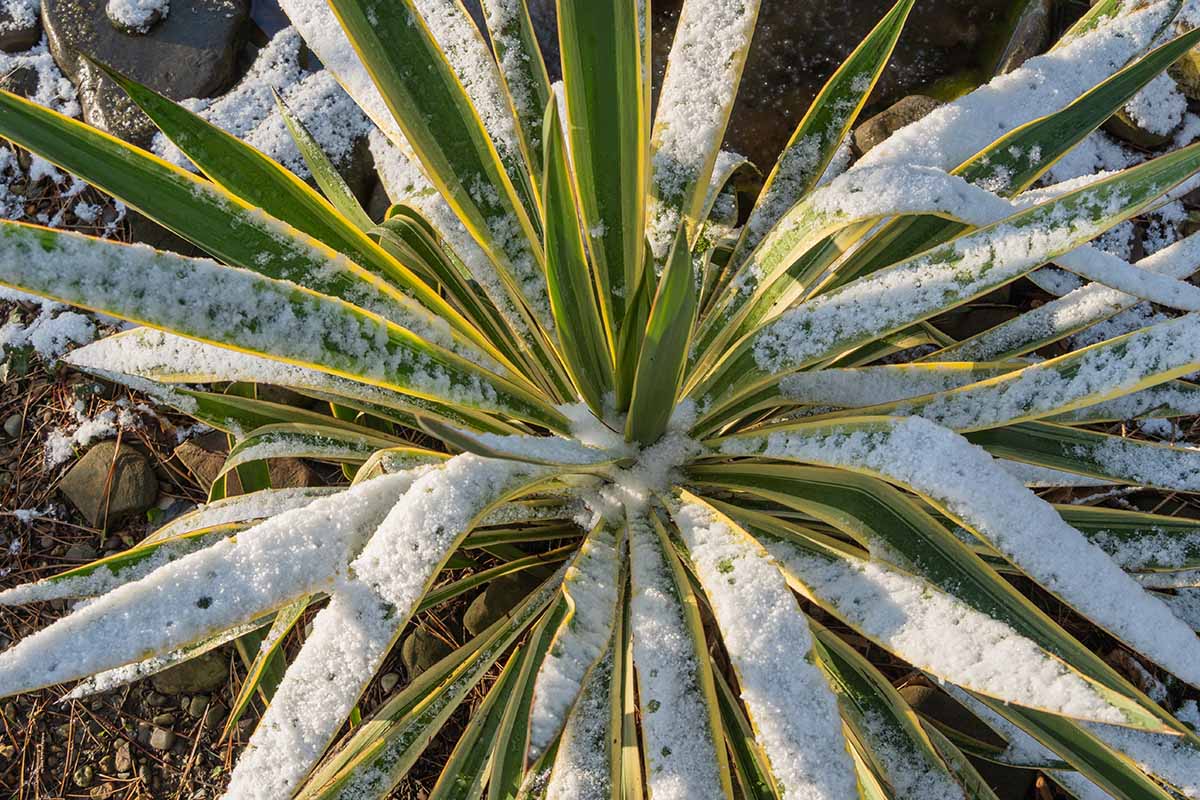
Spring division allows a full growing season for strong root development, giving new plants the best chances of survival in cold winter temperatures.
In areas with mild winters and extreme summer heat, division is best done in early fall.
Intense summer temperatures coupled with low water levels can make it difficult for new plants to become established. And although growth slows in fall and winter, they’ll fare better rooting in cooler temperatures with mild rains.
Dividing pups from indoor container plants can be done at any time from spring to fall.
Separating pups is easiest when they’re young – the bigger the pups are, the bigger and harder the roots are.
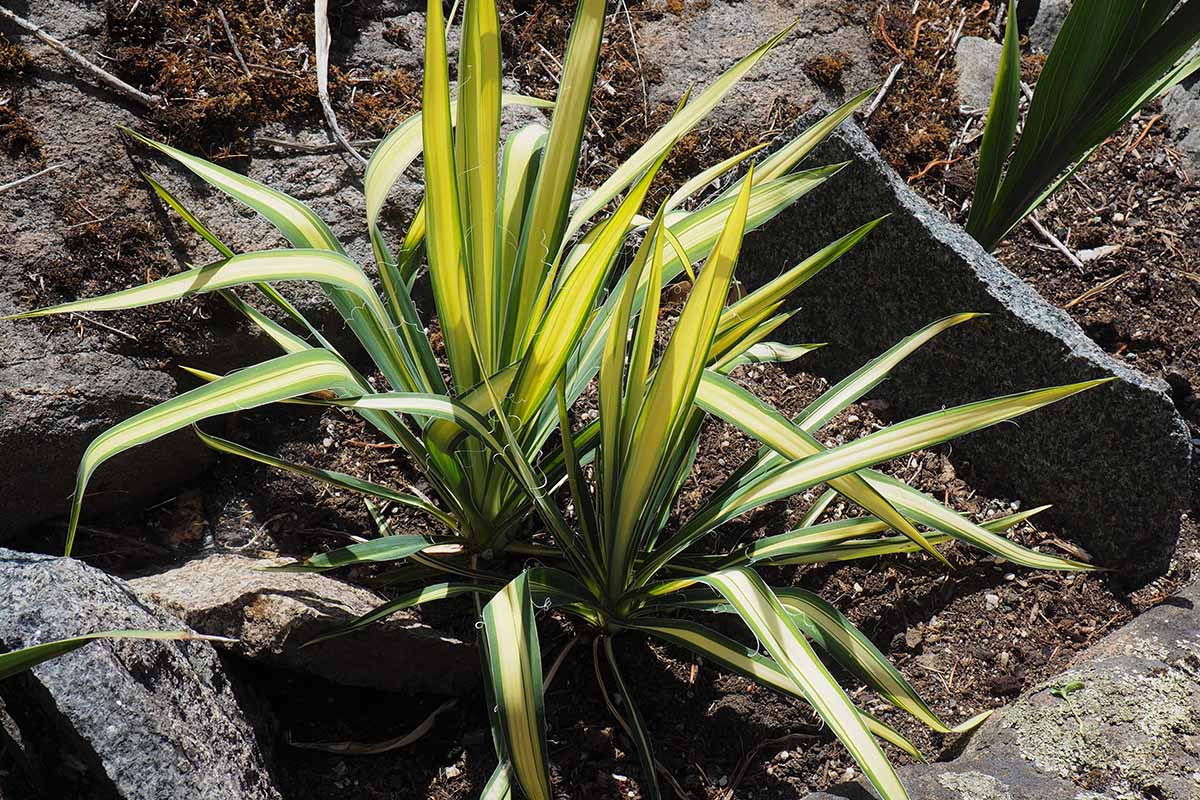
However, offsets should have stems at least four inches long before removing them.
And don’t remove pups that look paler in color than the parent. Deep coloring shows that the pup is producing chlorophyll and is mature enough to survive on its own.
How to Divide Pups
For new plants to develop strong root systems, each pup needs a healthy section of attached taproot. These are thick and fleshy.
To remove pups from the parent, insert a clean, sharp gardening knife or spade between the two stems.
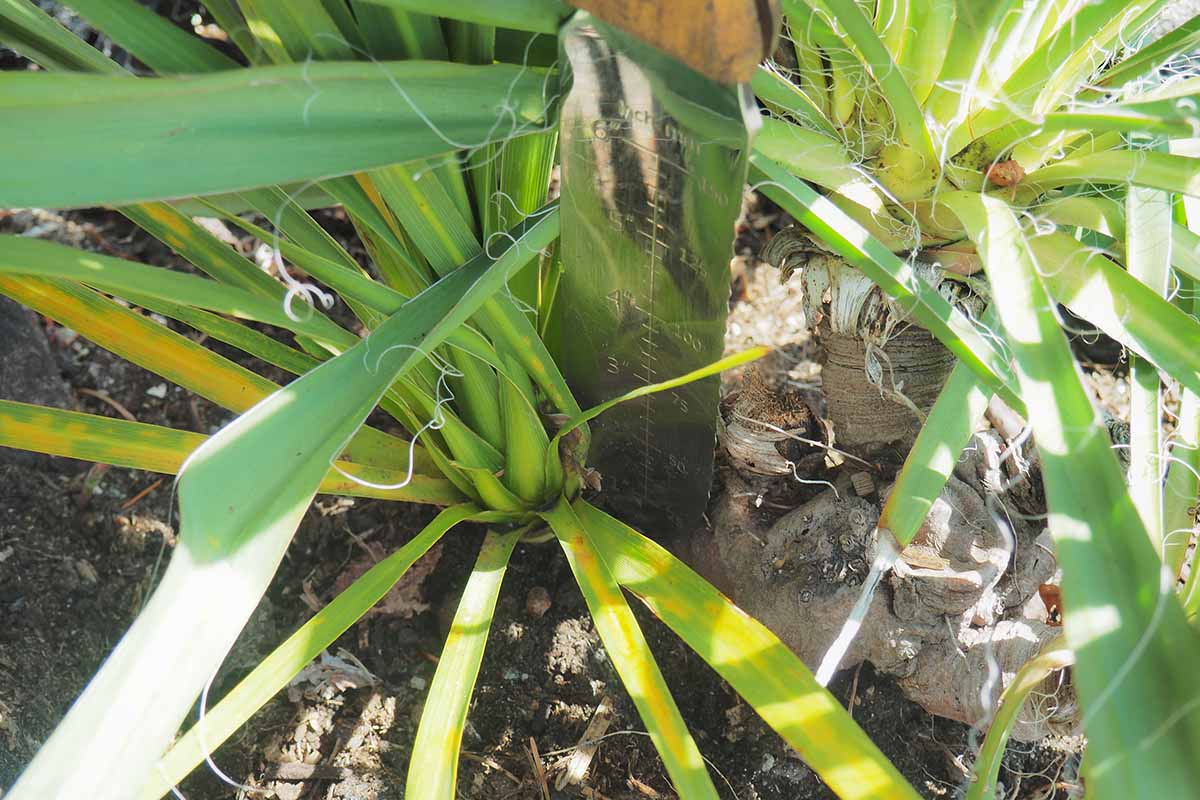
Push straight down, severing a small section of taproot from the parent.
Depending on the size of your yucca, the roots can be large and dense – you may need to use some force to cut through them cleanly.
Lift the offset and root section in one piece.
Plant bigger ones in beds, borders, rockeries, and large patio planters. Smaller ones can be potted up for the garden or indoor use.
Pot Them Up
To pot up offsets, choose containers with drainage holes – these succulents must have excellent drainage to avoid issues like root rot.
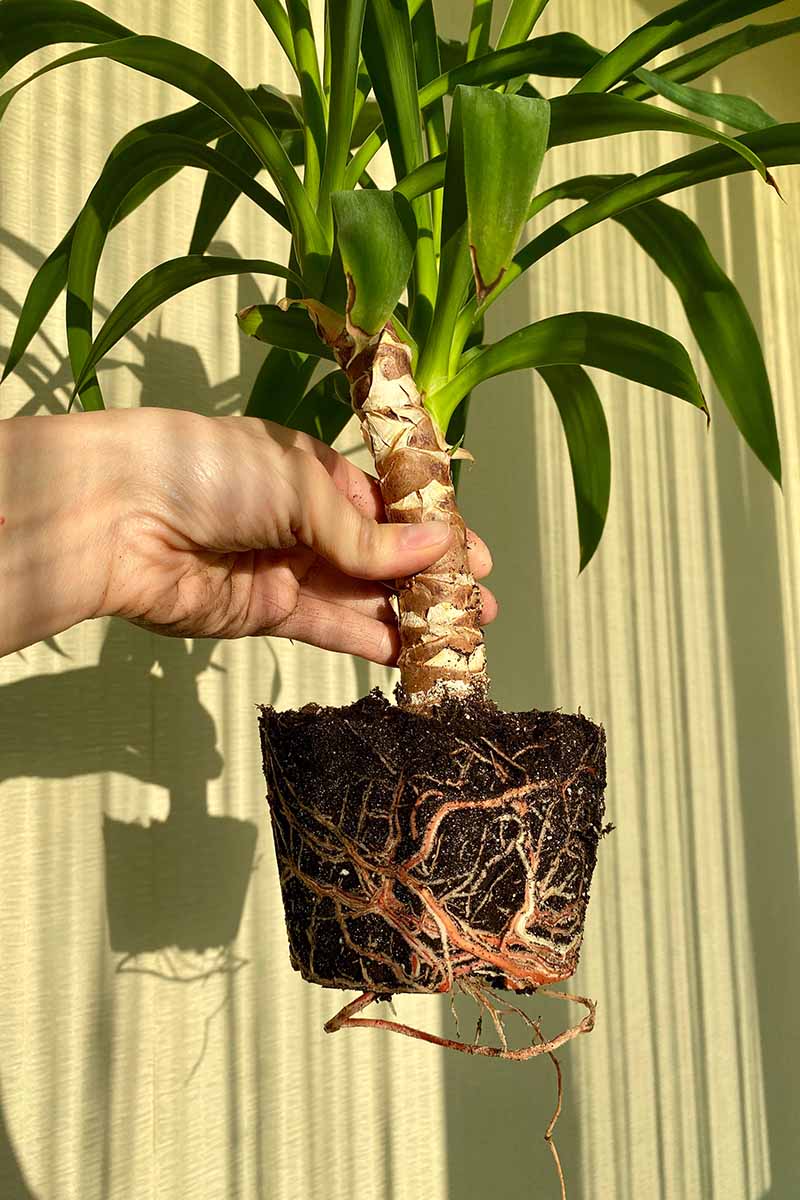
I like to add a two-inch layer of drainage material, such as broken pottery or pebbles, over the drainage holes to ensure the roots don’t sit in wet soil.
Fill containers with a succulent and cactus potting soil that contains plenty of grit for good drainage – or you can create your own succulent potting soil with our easy recipe.
Set the offset in place with the crown about one inch below the soil surface.
Backfill with soil and gently firm in place.
Water gently to settle and lightly moisten the soil.
Place containers in a full sun location.
Provide regular water for three months until the roots are well established. But take care to avoid overwatering and allow the top one or two inches of soil to dry out between applications.
Plant Them Out
Planting offsets out into garden beds is best done in spring.
Yuccas require a full sun location in well draining soil with a slightly acidic pH of 5.5 to 6.5.
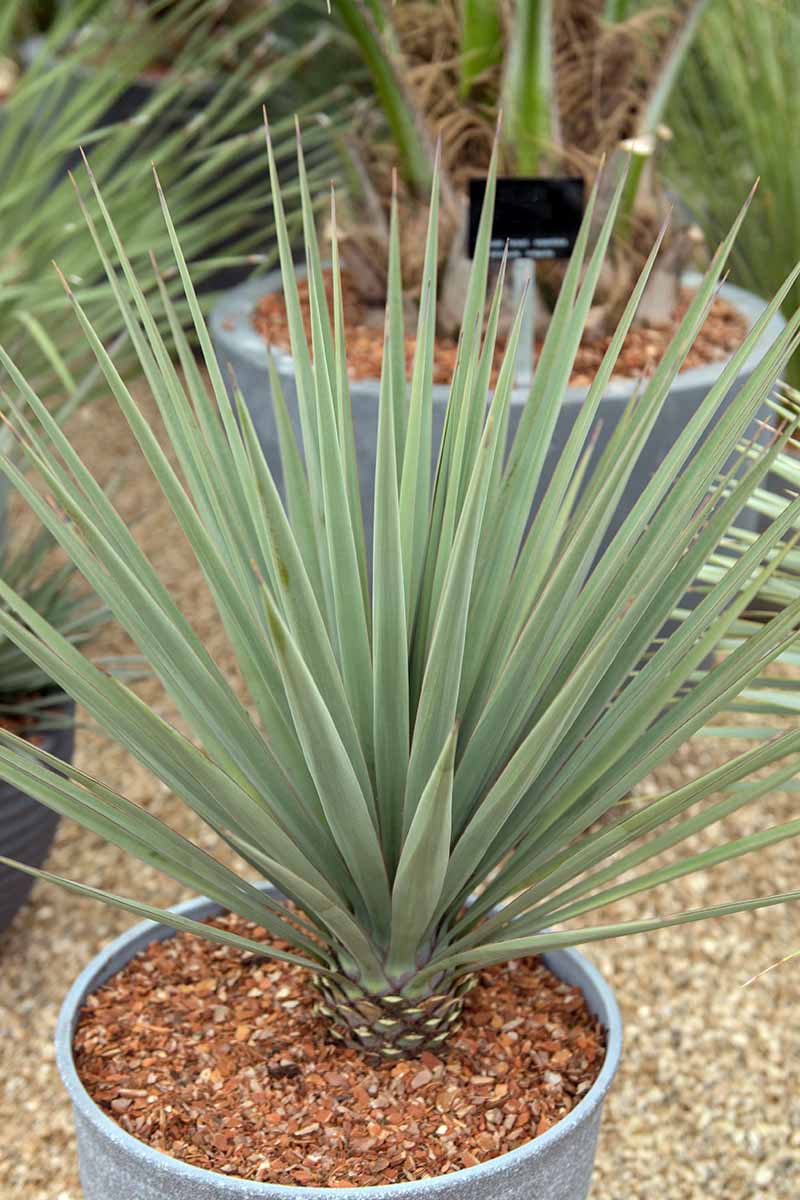
Create a planting hole twice as wide and twice as deep as the root ball.
To regular garden soil, mix in a shovelful of compost or well-rotted manure to enrich the soil.
Although yuccas thrive in lean, poor soil, enriching their planting site helps to get transplants off to a strong start.
If needed, mix in a shovelful or two of grit to ensure the soil drains well. Use materials such as landscaping sand, pea gravel, or stone chips to improve drainage.
Place your offsets with the crown one inch below the soil line then backfill with soil and gently firm over the roots.
Water to settle the roots in place.
For their first growing season, provide regular watering of up to one inch per week until plants are established.
After they’re established, reduce watering to one inch every two weeks, or a deep soak of two to four inches monthly.
Water-Wise Wonders
Drought tolerant and wonderfully undemanding, yuccas are beautiful, water-wise wonders for our gardens and homes.
And separating offsets is an easy and economical way to quickly multiply these hardy succulents.
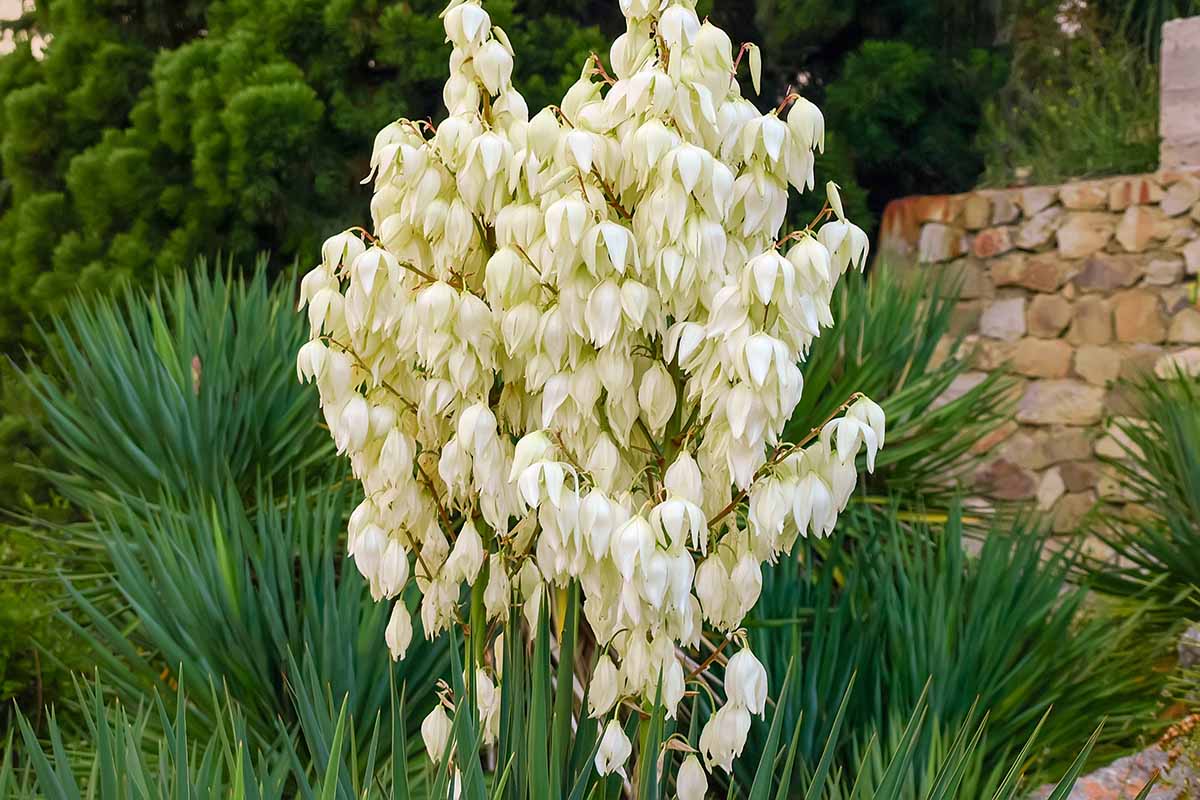
Remember to take a healthy section of taproot for strong root development and be sure to plant them in well-draining soil… but don’t overwater.
You’ll love how quickly your replanted and repotted offsets respond with vigorous, flowering growth!
Any questions about separating yucca offsets? Let us know in the comments section below.
And for more know-how on growing yucca plants, add these guides to your reading list next:
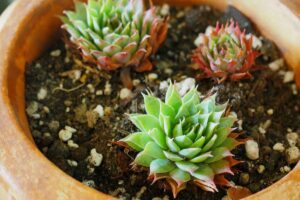
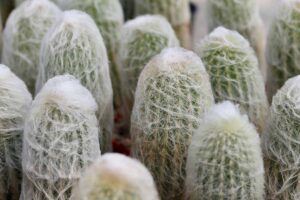
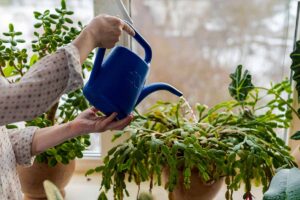
hi, i appreciate this information, thank you… i have a question, if that’s okay? my yucca is tall and was pretty strong and healthy, but now it’s looking weak and is losing lots of leaves. it has pups, and the pups are getting quite big and vigorous and i fear they are taking all the good nutrients away from the parent. first of all, can that happen? and can all parts of the plant survive? i hoping i can just cut the pups out and repot them, but i want to make sure i’m not going to damage the tap… Read more »
Hey Doug, as far as I know, the only species to die after flowering is Y. whipplei – a very large species and not typically used as a houseplant. Cutting out the pups and repotting them shouldn’t pose a danger to the parent plant, but I’m wondering about watering… The most common cause of dieback for houseplant varieties is root rot from overwatering or wet soil. Ensure your pot has drainage holes and wait until the top two inches of soil dries out between water applications. But the dieback could also be due to low light levels in winter. To… Read more »